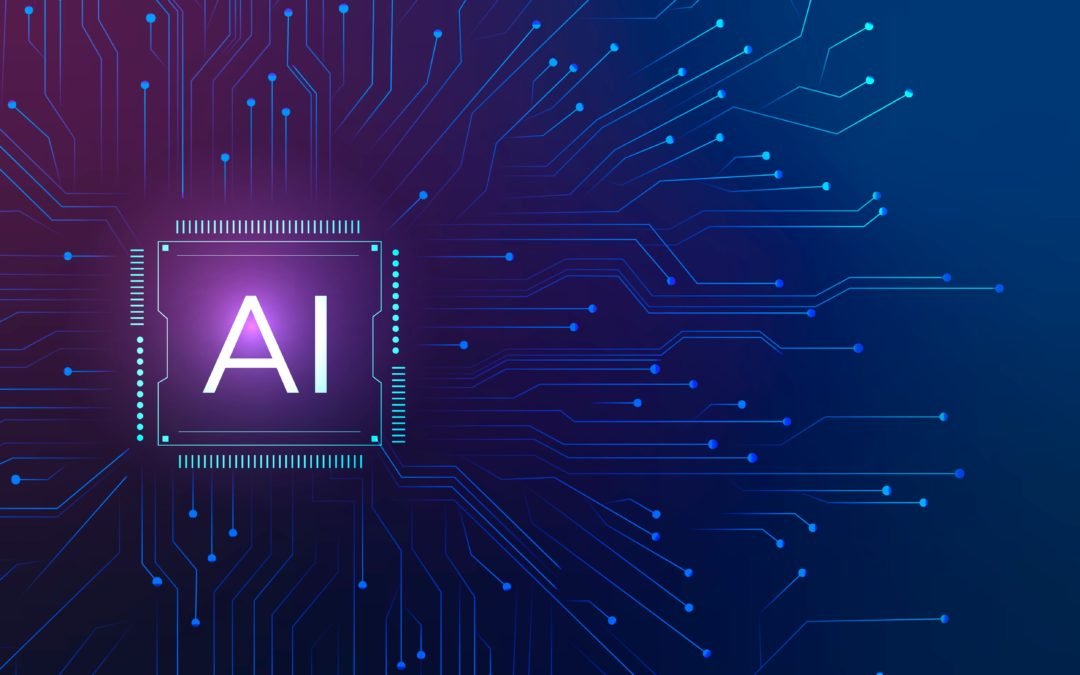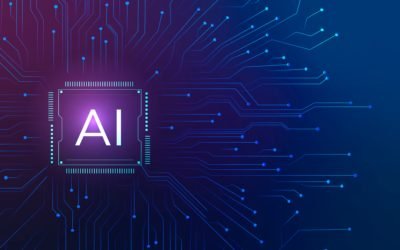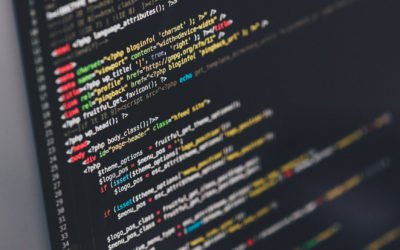If you have grandchildren or teenagers and have been paying attention, you've likely noticed the growing concern about social media and its potential negative impact on teens' mental well-being. This is not a passing trend but a pressing issue that demands our...

AI in 2025: Breakthrough Innovations Shaping Our Future
Well, 2025 is here. It is one of those inevitable situations; we as a country turn the page to a new year.
So, everyone wants to know what will happen in 2025. I know that many seniors are uncomfortable, and not knowing causes fear. Besides, a new president will take office on January 20th. This transition is causing seniors to worry about social security and health benefits, inflation, and more.
Words of wisdom: We can’t change anything that happens outside of us, including almost everything in life. Once you grasp that concept, I think letting go and seeing how things play out becomes more effortless.
Artificial Intelligence is an enigma for most people, even those under 30 who don’t follow tech or care.
You may feel that you don’t care, and that is understandable. However, I’m here to say that you should care.
Technology is changing our world exponentially, moving at the speed of light. For this reason, we have to know a little—maybe not a lot—and you certainly don’t need to be an expert. But you should familiarize yourself with how technology may change your life in 2025.
Two Areas We Will See Profound Changes
By 2025, technology will continue to shape our lives ever-acceleratingly, bringing many new opportunities and fresh challenges. Innovations in fields such as artificial intelligence (AI), robotics, and digital connectivity are already transforming industries ranging from healthcare to manufacturing. AI-driven diagnostics allow physicians to identify illnesses faster and more precisely, potentially saving countless lives. Meanwhile, robotic systems handle repetitive tasks impeccably and efficiently, streamlining production lines and easing human workload. And with high-speed internet connections becoming increasingly commonplace, businesses find it easier to expand globally, creating jobs and fostering cross-cultural collaboration.
However, along with these benefits come undeniable concerns. The rapid growth of automation and AI means that many traditionally secure jobs could be rendered obsolete. From self-checkout machines in grocery stores (already here) to self-driving vehicles in delivery fleets, entire sectors risk losing their human workforce. This displacement can lead to social and economic upheaval if not managed carefully—training programs and support networks must be established to help workers adapt to an AI-driven economy. Unequal access to these technologies could widen the gap between social and economic groups, further exacerbating existing inequalities.
Cybersecurity and privacy are also pressing issues in this new landscape. As connected devices proliferate—from smart refrigerators to sophisticated AI assistants—the volume of personal data collected, shared, and sometimes sold grows exponentially. Data breaches and identity theft could become even more common if companies and individuals don’t prioritize robust security measures. At the same time, concerns about AI-generated misinformation and deepfakes threaten public trust and social harmony. This challenge underscores the critical need for transparent AI development, responsible data handling, and comprehensive regulatory frameworks.
In many ways, the potential of 2025’s technology is awe-inspiring. From expanding the boundaries of medical research to opening new frontiers of creativity with AI-assisted design, our lives could be enriched in ways we could have only dreamed of a decade prior. But the power of innovation also carries responsibility. As AI evolves, ethical considerations, regulatory oversight, and a commitment to inclusive growth will be vital. Striking the right balance between harnessing the promise of cutting-edge tech and mitigating its pitfalls is the key to ensuring that technology continues to improve our lives rather than undermine our collective future.
Many talking heads discuss regulation. It is a very nuanced issue, with tentacles reaching every sector that technology touches. Because of this, technology regulation is a hot topic. Equal numbers of experts on both sides believe technology needs to be reined in, while others think it should be left to its own accord.
I’m not sure what the answer is. Since most people do not know the answer, nothing has been done. And it may continue for quite some time.
So, let’s dive into what is the best yet to come.
Medical Advancements
Technological advancements in medicine have accelerated rapidly in recent decades, transforming how we prevent, diagnose, and treat many of the world’s most challenging diseases. Key breakthroughs—such as developing life-saving vaccines, novel drug therapies, and advanced diagnostic tools—have opened possibilities once deemed science fiction. Today, techniques like gene editing (e.g., CRISPR), immunotherapies for cancer, and AI-assisted drug discovery offer hope for better health outcomes and even potential cures for diseases long considered untreatable.
One notable turning point in modern medical innovation was the rapid development of mRNA vaccines. Although the core scientific principles behind mRNA-based therapies had been under investigation since the early 1990s, the COVID-19 pandemic in 2020-2021 catalyzed this technology’s first widespread clinical deployment. Before this, vaccine development typically required years—sometimes decades—of research, testing, and manufacturing. mRNA technology, however, allowed scientists to “instruct” cells to produce specific proteins that trigger an immune response without exposing patients to a weakened or inactivated pathogen. This approach not only sped up the creation of vaccines but also opened the door for future uses of mRNA in treating other diseases, including certain cancers and viral infections like HIV.
Beyond mRNA vaccines, medicine is also witnessing other transformative shifts. AI-driven diagnostic tools can analyze medical images or patient data to detect early signs of cancer, Alzheimer’s, or cardiovascular conditions. This level of computational power—something unimaginable even a decade ago—has the potential to catch illnesses earlier when they’re more easily treatable. Additionally, advances in genetic engineering allow for more targeted therapies: for instance, CRISPR-based treatments aim to “edit out” genetic mutations responsible for hereditary conditions. Meanwhile, sophisticated immunotherapies train patients’ immune systems to identify and destroy malignant cells, revolutionizing cancer care for some patients.
As these innovations take hold, we’re beginning to reimagine what’s possible in cures. Diseases like certain leukemias, once nearly unbeatable, now have significantly improved survival rates due to personalized treatments. Long-standing viral challenges such as hepatitis and HIV are increasingly treatable or manageable. The pipeline of upcoming therapies—from next-generation vaccines targeting dozens of different pathogens to sophisticated gene-editing solutions—suggests we are only at the start of a medical revolution.
Still, significant hurdles remain. Cost and equitable access are critical issues, as these cutting-edge treatments can be prohibitively expensive. Ethical questions around genetic modification also loom, as do the complexities of global regulatory frameworks designed to keep patients safe. Nevertheless, the rapid progress in mRNA vaccine production during a global crisis has demonstrated how quickly medical technology can advance under the right conditions. Moving forward, these breakthroughs offer a glimmer of hope that, one day, many of today’s most daunting diseases could become controllable—or even curable—through the continued convergence of biology and technology.
Robotics
While we may not be getting our own “Rosie,” the housemaid from The Jetsons, in 2025, we are getting closer to having assistants.
By 2025, robotics is poised to become even more deeply intertwined with everyday life, transitioning from specialized industrial contexts into a broader range of sectors. We can expect robots on factory floors to assist in households, hospitals, retail spaces, and public infrastructure. Advances in artificial intelligence and machine learning will enable robots to perform more complex, contextual tasks—such as navigating busy streets, interacting safely with humans, and understanding natural language commands.
Collaborative robots (cobots) will become more prevalent in industrial settings. These machines are designed to work alongside human operators, taking on repetitive, strenuous, or dangerous tasks, while humans handle the more nuanced, creative, or dexterous work. Improved sensor technology will increase safety, allowing robots to detect and respond to human presence without requiring extensive protective barriers. This will streamline manufacturing and assembly processes, cut labor costs, and potentially free human workers to focus on higher-level strategic tasks.
Beyond the factory, service and social robots could see a significant uptick. For instance, in healthcare, robotic assistants help lift patients, dispense medication, or monitor vitals, alleviating some of the burden on nurses and caregivers. In retail or hospitality, robots could manage inventory, greet customers, or serve food and beverages. Self-driving delivery robots may also become more widespread, navigating sidewalks or roads to bring packages and meals straight to our doorsteps. With advanced computer vision and AI-powered decision-making, these robots can operate more independently and adapt to rapidly changing environments.
However, these developments will also bring challenges. There are still hurdles in robot dexterity—for example, handling fragile items or manipulating objects in cluttered environments remains difficult. Robotics companies must address public concerns about job displacement and ensure robust safety protocols. Additionally, questions of liability, regulation, and cybersecurity will arise as robots become more autonomous. Nonetheless, by 2025, the acceleration of robotic technologies and parallel developments in AI will likely contribute to a world where robots are a visible, impactful part of everyday living.
Many more advancements in tech will be coming in 2025, but those are the two areas that will impact our lives.
We will take a deeper dive as the days and months 2025 unfold.





